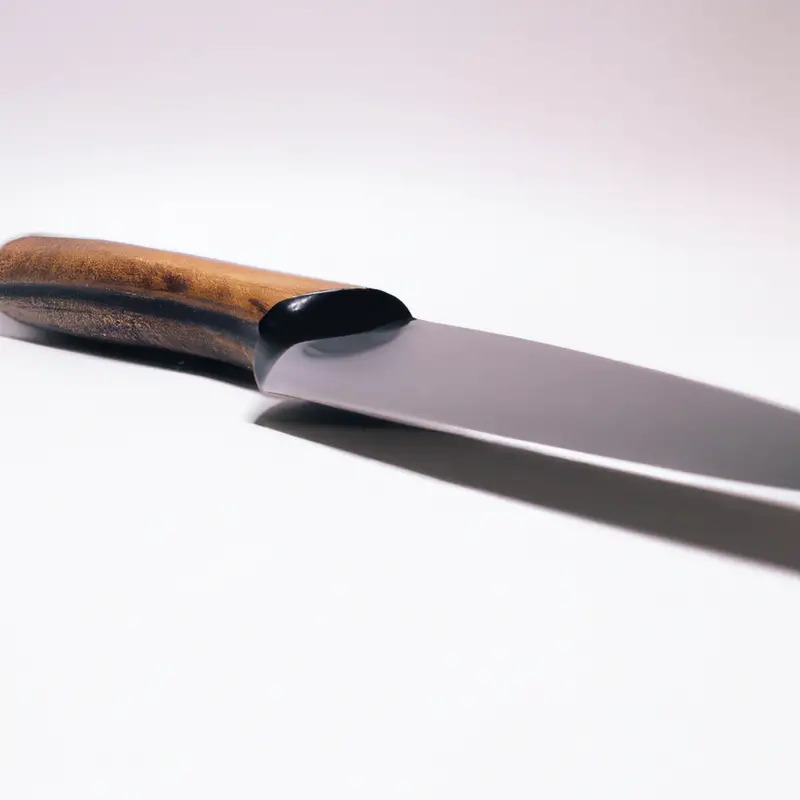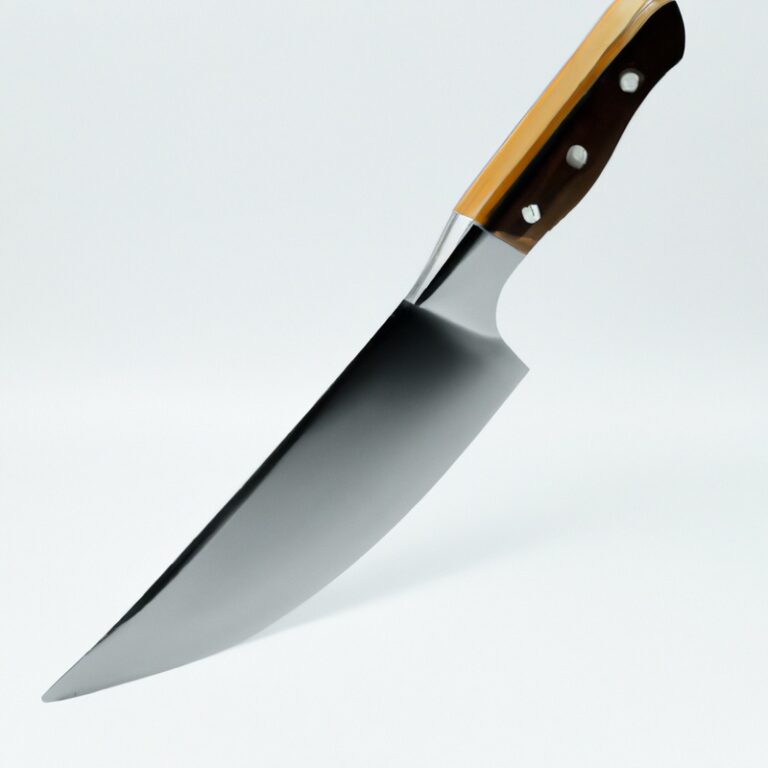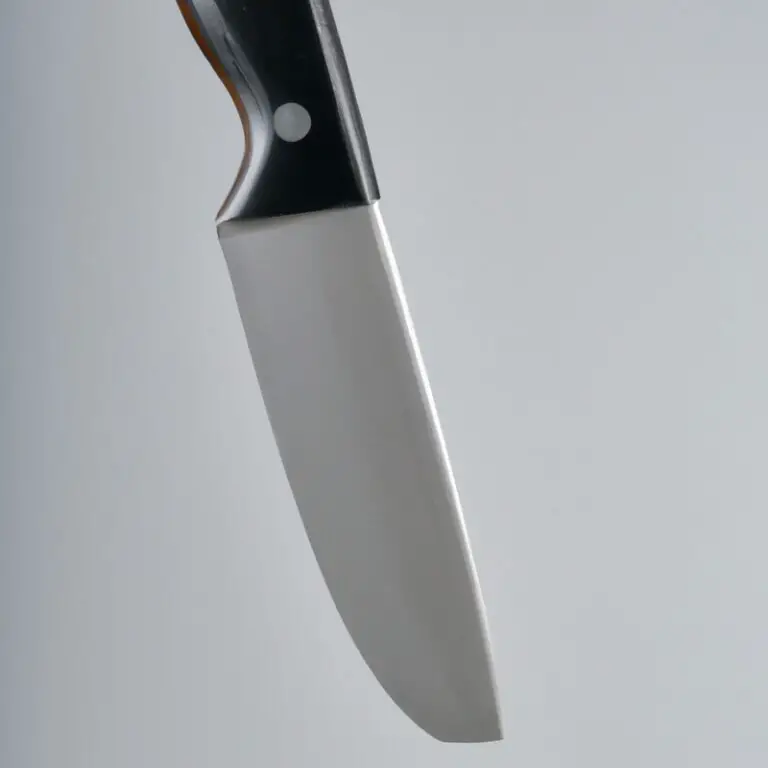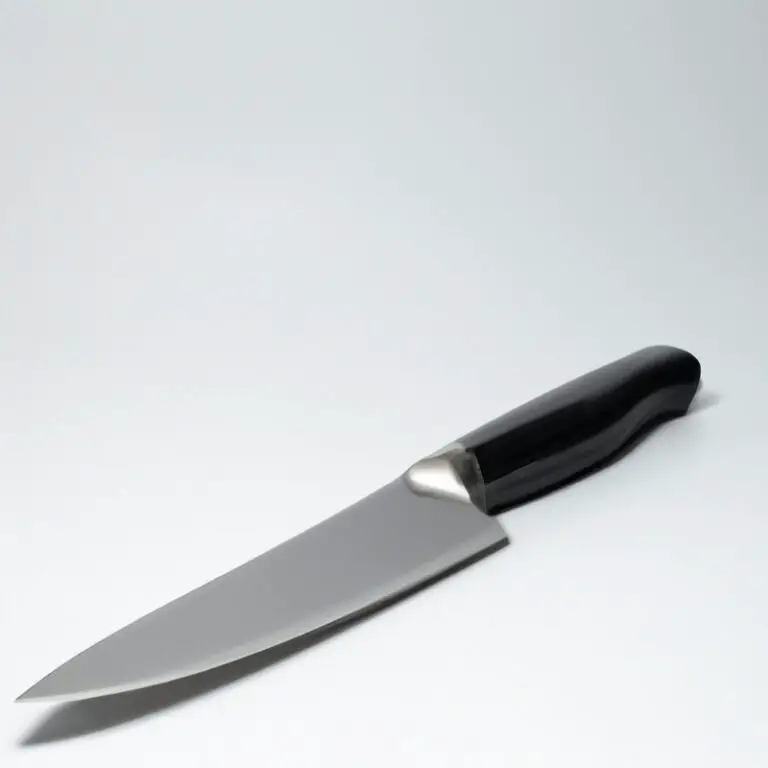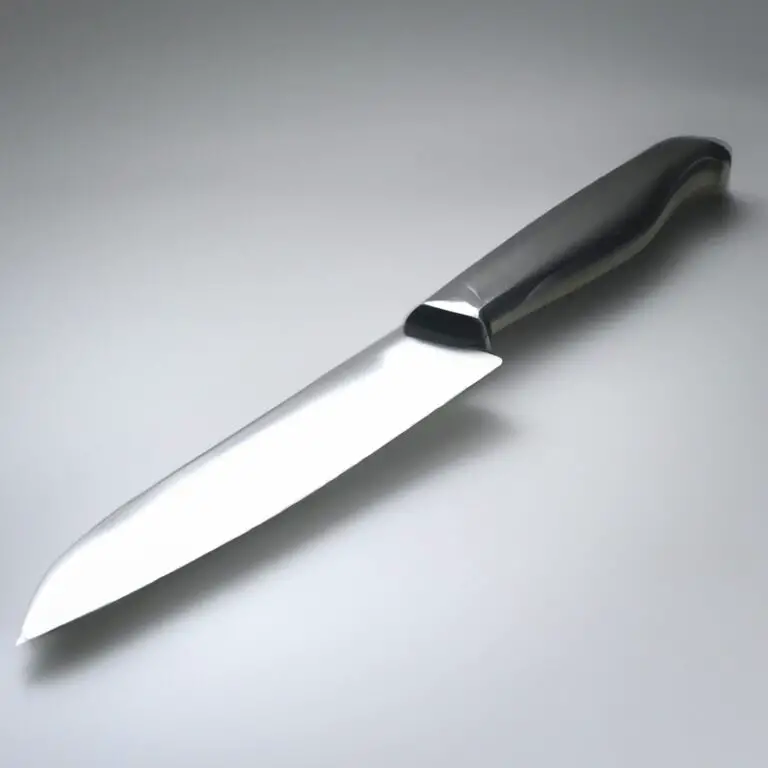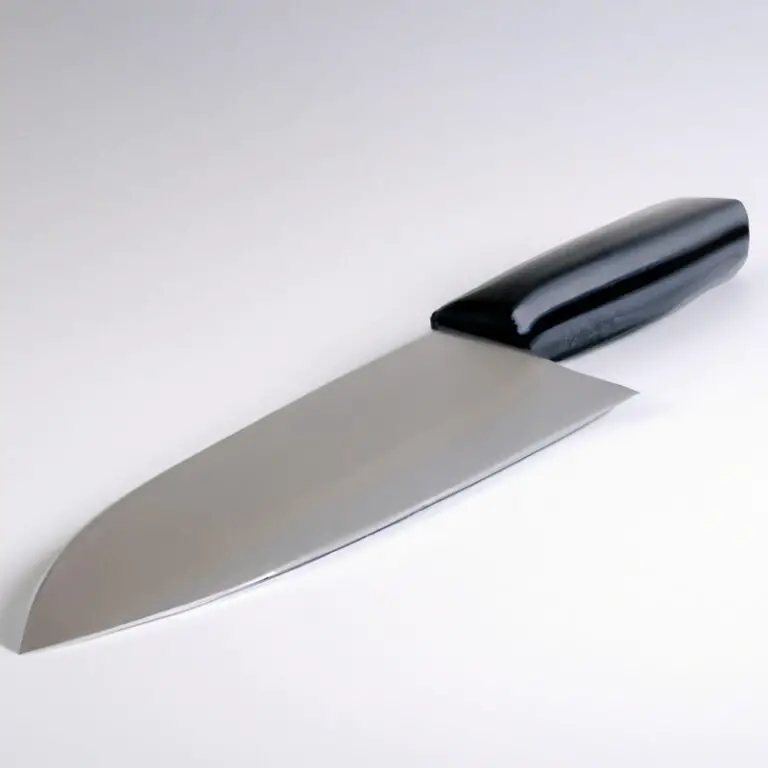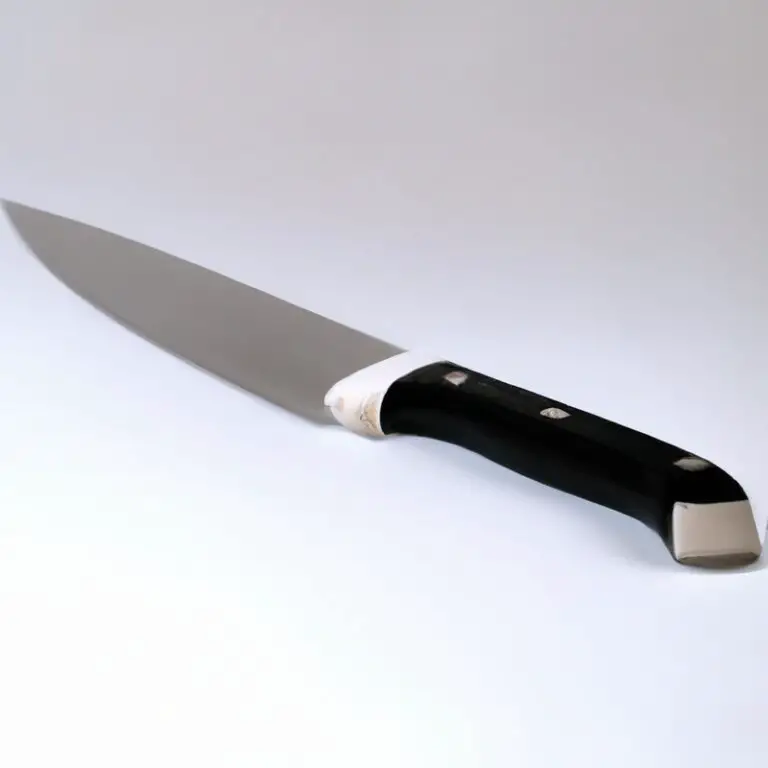What Are The Advantages Of a Japanese-Style Chef Knife? Slice With Precision
Key Takeaways:
- A Japanese-style chef knife provides a sharper and thinner blade, making it ideal for precision cutting and slicing.
- The unique design and balance of a Japanese-style chef knife allows for greater control and ease of use, reducing hand fatigue and injuries.
- Japanese-style chef knives are typically made from high-quality steel, resulting in a longer lifespan and less frequent sharpening.
- Investing in a Japanese-style chef knife can enhance the taste and presentation of your dishes, elevating the overall dining experience for you and your guests.
Are you tired of using dull and heavy knives in the kitchen? Have you been searching for the perfect tool to enhance your precision cutting skills?
Look no further than a Japanese-style chef knife.
From its unique blade geometry to its ergonomic handle design, this type of knife has been growing in popularity among professional and amateur chefs alike. But what sets Japanese knives apart from their European counterparts?
In this article, we’ll explore the advantages of using a Japanese-style chef knife and why investing in one can revolutionize your cooking experience.
| Advantages of Japanese-style Chef Knife |
|---|
| Sharper and thinner blade |
| Harder steel for better edge retention |
| Lightweight and well-balanced |
| Suitable for precise cuts and intricate designs |
| Distinctive and stylish design |
Why Japanese-style knives are gaining popularity among chefs
Japanese-style knives are becoming increasingly popular among chefs due to their unique blade geometry and sharpness. Unlike European-style knives, Japanese knives have a thinner, sharper blade that allows for more precision cutting.
The single-beveled edge is particularly important for professional chefs, as it allows for easier control and more accuracy during cutting.
Additionally, Japanese knives are made from high-quality materials and feature ergonomic handle designs for comfortable long-term use. While they may require more maintenance and care, investing in a high-quality Japanese-style knife is worth the cost over time.
Overall, Japanese-style knives offer superior functionality and versatility than their European counterparts, making them a favorite among chefs worldwide.
The history and evolution of Japanese-style chef knives
Japanese-style chef knives, also known as wa-bocho, have a long history dating back to the Kamakura period in Japan (1185-1333 AD). Initially, they were used as weapons by samurai and were later adapted to be used as kitchen knives.
The first Japanese-style chef knives were made from soft iron and laminated with a high-carbon steel cutting edge for sharpness and durability.
These knives were handmade by skilled blacksmiths and required a labor-intensive process that involved forging, tempering, and sharpening. Over time, Japanese-style chef knives evolved to meet the changing needs of Japanese cuisine.
Different types of knives were created for specific tasks, such as the deba knife for filleting fish and the nakiri knife for chopping vegetables.
One of the most significant advancements in Japanese knife-making was the creation of the single-beveled edge, where only one side of the blade is sharpened to a fine angle. This allows for greater control and precision when cutting, especially for delicate tasks such as slicing sashimi.
Today, Japanese-style chef knives continue to be highly valued by professional chefs and home cooks around the world for their precision, sharpness, and versatility.
The traditional methods of knife-making are still used by many craftsmen, but modern technology has also allowed for the mass production of high-quality Japanese knives.
The unique blade geometry of Japanese knives and how it affects cutting performance
Japanese knives are known for their unique blade geometry, which affects their cutting performance. The thin and sharp blade allows for precise cuts, making them ideal for intricate tasks like sushi and sashimi preparation.
The single-beveled edge also enhances cutting accuracy, giving professional chefs better control over their cuts.
Additionally, the shape of the blade is designed to make it easier to cut through food with minimum resistance. Overall, the blade geometry of Japanese knives creates a superior cutting experience, making them a top choice for chefs who demand precision and efficiency in their kitchen.
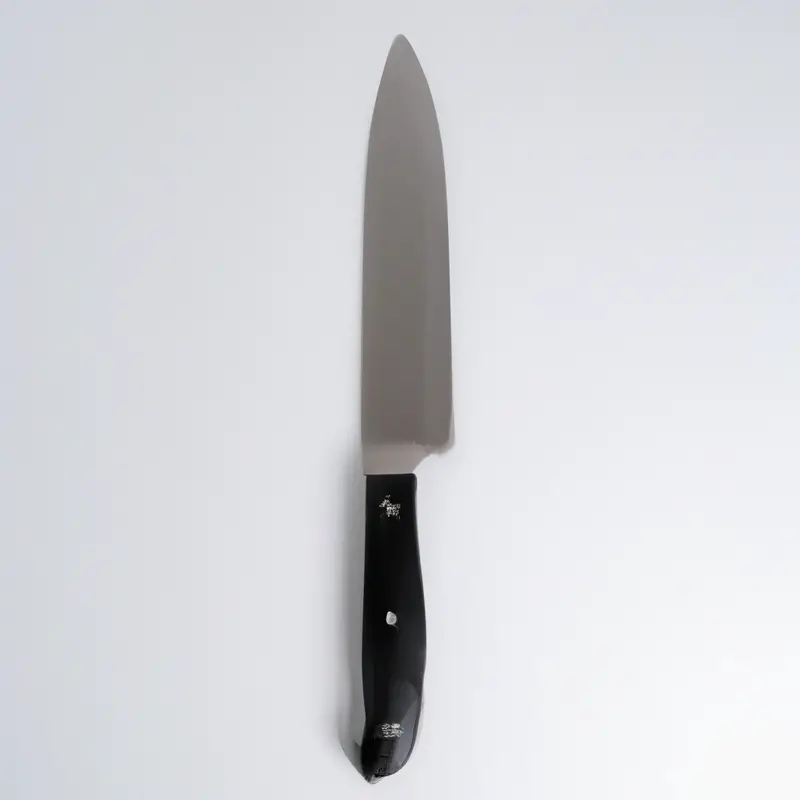
The benefits of a thinner and sharper blade for precision cutting
A thinner and sharper blade on a Japanese-style chef knife provides a host of benefits for precision cutting. The thin and lightweight nature of the blade makes it easier to maneuver around bones, cartilage and delicate flesh.
This is crucial when preparing meats and fish, where precision is crucial for presentation and taste.
The sharpness of the blade also ensures that the chef can make effortless and clean cuts, without having to exert too much pressure on the knife or food. The result is a cleaner, quicker and more efficient process of food preparation.
Japanese-style chef knives are particularly well-suited for precision jobs, such as carving and filleting.
The precision and speed that can be achieved with such knives is hard to obtain with thicker or heavier European-style knives. As a result, professional chefs have been relying on these Japanese-style knives for centuries, and they are gaining more and more popularity in home kitchens today.
The importance of the single-beveled edge for professional chefs
The single-beveled edge is a vital characteristic of Japanese-style chef knives. Unlike traditional European knives that feature a double-beveled edge, a single-bevel creates a sharper blade with more precision and control in making thin and accurate cuts.
Professional chefs rely on this feature for preparing delicate ingredients with utmost accuracy, including filleting fish or cutting sushi.
The angle of the bevel also affects the cutting ability and ease of sharpening of the blade. The beveled edge is highly customizable depending on the chef’s preference and requirements.
Overall, the single-beveled edge sets Japanese-style knives apart from other types, making them the go-to choice of expert chefs.
The different types of Japanese knives and their specific uses
Japanese knives come in various types, each with a specific purpose. The most commonly used Japanese knives include the Gyuto, Santoku, Nakiri, Yanagiba, Deba, and Usuba.
The Gyuto is a versatile knife that can be used for various tasks such as slicing, dicing, and chopping.
It is the Japanese equivalent of the Western chef’s knife. The Santoku is a multipurpose knife that can be used for slicing and dicing meat, fish, and vegetables.
The Nakiri is a vegetable knife that features a straight blade and is ideal for slicing through vegetables with precision.
The Yanagiba is a long and slender knife primarily used for slicing raw fish for sushi and sashimi. The Deba is a heavy and durable knife used for filleting fish and breaking down poultry.
The Usuba is a vegetable knife similar to the Nakiri, but with a thinner and sharper blade that allows for precise cuts.
Knowing the different types of Japanese knives and their specific uses allows chefs to select the right knife for their task, ensuring precise cuts and optimal performance.
The materials used in Japanese knife-making and how they affect performance
Materials play a crucial role in the performance of Japanese-style chef knives. The most common steel used in Japanese knife-making is high-carbon steel.
This type of steel is known for its ability to hold a sharp edge, making it ideal for precision cutting and slicing.
Additionally, many Japanese knives are made with a layered steel construction called “Damascus”. This process involves forging multiple layers of steel together to create a blade that is both strong and flexible.
The unique layering pattern also adds an aesthetically pleasing element to Japanese-style knives.
Another material commonly used in Japanese knife-making is VG-10, a high-quality stainless steel that is highly resistant to rust and corrosion. It is often used in the creation of high-end Japanese knives because it holds a sharp edge well and is easy to maintain.
Finally, the handle of a Japanese knife is typically made from either wood or a synthetic material like Micarta or G10.
These materials are chosen for their durability, grip, and ability to resist moisture. The choice of materials used in Japanese knife-making has a significant impact on the performance and durability of the knife.
High-carbon steel, Damascus construction, and VG-10 steel are some common materials used to create sharp, long-lasting blades, while wood and synthetic materials are preferred options for the handle.
The ergonomic handle designs of Japanese-style knives for comfortable long-term use
The ergonomic handle designs of Japanese-style knives are one of their distinct features that make them comfortable for long-term use. The handles are designed to fit comfortably in the hand, providing excellent grip and reducing fatigue caused by prolonged cutting tasks.
Japanese knife handles are usually made of materials such as natural wood, micarta, or acrylic, which are resistant to moisture and easy to clean.
The octagonal or D-shaped handle design also allows for better control and precision while cutting. The handle’s weight is usually balanced with the blade for optimal performance.
Japanese-style knives use a full tang construction, meaning the blade and handle are seamlessly integrated, providing balance and durability.
With the right handle design, chefs can use Japanese-style knives for hours without experiencing hand fatigue.
How Japanese knives compare to European-style knives in terms of functionality and versatility
Japanese knives and European-style knives differ in several ways that affect their functionality and versatility. Japanese knives are known for their thinner and sharper blades, which result in a more precise and clean cut.
They often have a single-beveled edge, which is ideal for professional chefs that need to slice through delicate or raw food items.
On the other hand, European-style knives are heavier and have a thicker blade, which makes them suitable for chopping dense and tough ingredients. The double-beveled edge of European knives makes them more versatile for a range of tasks.
Ultimately, the choice between a Japanese or European-style knife comes down to personal preference and the specific requirements of the task at hand.
The maintenance and care required to keep a Japanese-style chef knife in top condition
Maintaining a Japanese-style chef knife is essential to keep it in top condition. Here are some tips to ensure the longevity of your knife:
- Handwash your knife with warm soapy water immediately after use.
- Avoid using abrasive sponges or harsh chemicals to clean your knife.
- Dry your knife thoroughly after washing.
- Store your knife in a knife block or sheath to prevent damage to the blade or edge.
- Regularly sharpen and hone your knife using a whetstone or honing rod to maintain its sharpness.
- Do not use your knife to cut frozen food or bones, as this can damage the blade.
- Finally, periodically inspect your knife for any signs of wear or damage and seek professional assistance if necessary.
By following these simple steps, you can prolong the lifespan of your Japanese-style chef knife and ensure that it continues to perform at its best.
Why investing in a high-quality Japanese-style knife is worth the cost over time
Investing in a high-quality Japanese-style knife is worth the cost over time for several reasons. Firstly, Japanese knives are made with high-quality materials and crafted using traditional techniques, resulting in superior durability and longevity.
A well-maintained Japanese knife can last a lifetime, making it a worthwhile investment for professional chefs and home cooks alike.
Secondly, Japanese-style knives feature a unique blade geometry that provides exceptional cutting performance. The thin and sharp blade allows for precise cuts and minimal damage to food, resulting in cleaner and visually appealing dishes.
The single-beveled edge also offers greater control and accuracy when preparing delicate ingredients.
Finally, the ergonomic handle designs of Japanese-style knives make them comfortable to use for extended periods, reducing hand fatigue and promoting safe cutting practices. Investing in a high-quality Japanese-style knife can enhance your cooking experience and skillset, allowing you to achieve professional-level results in the kitchen.
While Japanese-style knives may come with a higher price tag, the benefits they offer in terms of longevity, cutting performance, and ergonomic design make them a worthwhile investment in the long run.
It is essential to choose the right Japanese-style chef knife for your cooking style and needs to maximize its potential and ensure optimal results.
How to choose the right Japanese-style chef knife for your cooking style and needs
Choosing the right Japanese-style chef knife depends on your cooking style and needs. Here are some factors to consider:
- Blade shape: Choose a knife with a blade length that suits your needs. A shorter blade is ideal for precise cuts, while a longer blade is better for larger ingredients.
- Blade material: Look for a knife with high carbon steel for a sharper edge, while stainless steel is easier to maintain.
- Handle design: Consider the handle material and shape for a comfortable grip during extended use.
- Bevel: Choose a single bevel knife for professional chefs, while a double bevel is more versatile for home cooks.
- Type of knife: Select a knife based on the tasks you perform most, such as a Santoku knife for chopping and a Nakiri knife for slicing vegetables.
- Cost: Japanese-style knives can range in price, so choose a knife that fits your budget and provides quality for its cost.
By considering these factors, you can choose a Japanese-style chef knife that suits your needs, cooking style, and budget.
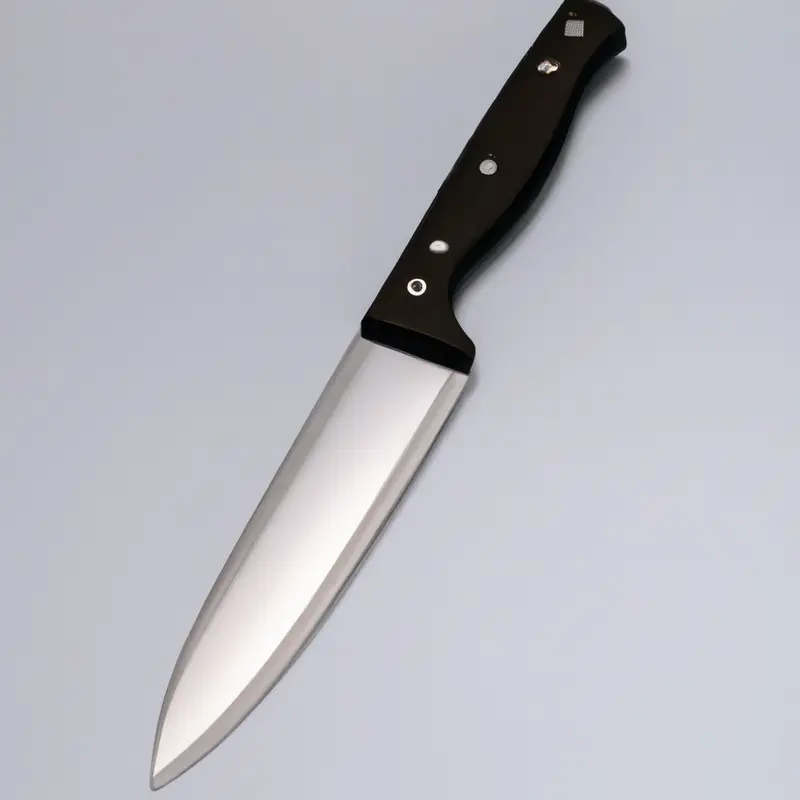
Tips for sharpening and honing a Japanese-style chef knife at home
Sharpening and honing a Japanese-style chef knife at home can seem daunting, but with the right tools and techniques, it can be easily done. Here are some tips to help you get started:
- Use a whetstone – A whetstone is the best tool to sharpen your Japanese knife. Make sure to choose the appropriate grit for your knife (lower grit for more damaged blades and higher grit for maintenance.
- Maintain the angle – Keep a consistent angle when sharpening your knife. For Japanese-style knives, the angle typically ranges between 10-15 degrees.
- Use a honing rod – A honing rod can help maintain the sharpness of your knife between sharpening. Use it at a 15-degree angle to lightly realign the blade’s edge.
- Avoid the pull-through sharpeners – Pull-through sharpeners can be too aggressive and remove too much material from your knife, damaging the blade’s edge.
- Clean your knife and whetstone – After sharpening, make sure to clean your knife and whetstone with warm water and soap, dry them thoroughly and store them properly.
By following these tips, you can keep your Japanese-style chef knife sharp and in top condition, ensuring precise and effortless cuts every time you use it.
The cultural significance of Japanese-style chef knives in Japanese cuisine
Japanese-style chef knives hold great cultural significance in Japanese cuisine. Known as “hocho,” these knives are more than just kitchen tools.
They are an extension of the chef’s hand, representing honor, tradition, and respect for the craft.
Japanese knives are crafted with centuries-old techniques passed down through generations, and each blade tells a unique story of its maker. For Japanese chefs, using a hocho is a form of artistry, allowing them to create culinary masterpieces with precision and finesse.
The intricate designs of the blade, handle, and even the sheath are all part of the Japanese knife-making tradition, which has evolved over time.
Today, Japanese knives are highly coveted by chefs around the world and are a testament to the enduring legacy of Japanese cuisine.
The role of Japanese-style chef knives in modern Western cuisine
Japanese-style chef knives have become increasingly popular in modern Western cuisine due to their exceptional cutting performance and precision. Chefs around the world have recognized the benefits of using these knives to achieve finer, more delicate cuts that are often necessary in traditional Japanese dishes.
However, the versatility and efficiency of Japanese-style knives have made them popular in Western cuisine as well.
Many chefs now consider them an essential tool in their kitchens, allowing them to perform a range of tasks with ease and accuracy. With the unique blade geometry, thin and sharp blades, single-beveled edges, and ergonomic handles, Japanese-style chef knives have revolutionized the way chefs work, allowing them to explore new culinary techniques and styles.
As they continue to gain popularity, it is clear that Japanese-style chef knives have a significant role to play in modern Western cuisine.
The potential for Japanese-style knives to revolutionize the world of culinary arts
Japanese-style knives have the potential to revolutionize the world of culinary arts due to their exceptional cutting performance and precision. Chefs around the world are increasingly adopting Japanese knives, recognizing their superior sharpness, durability, and ergonomic design.
As more people discover the benefits of Japanese-style knives, their popularity will continue to grow, potentially changing the way we view culinary arts and cooking equipment.
With the unique blade geometry and materials used in Japanese knife-making, these knives are poised to become essential tools in every chef’s arsenal and could play a significant role in shaping the future of the culinary world.
Future trends in Japanese-style knife-making and their impact on the culinary world
Japanese-style knife-making is an art form that continues to evolve with the times. As technology advances, we can expect to see even greater innovation in the design, materials, and functionality of Japanese knives.
These future trends in Japanese-style knife-making will undoubtedly have a significant impact on the culinary world.
Some of the most visible trends include increased automation in the manufacturing process, the use of new materials such as high-tech alloys and ceramics, and the development of new blade shapes and designs. These changes will improve the durability, sharpness, and overall performance of Japanese-style knives, making them even more coveted tools for professional chefs and home cooks alike.
In addition, we can also expect to see a rise in the popularity of artisanal Japanese-style knife-makers who specialize in creating high-quality, handmade knives that are unique works of art.
These bespoke knives cater to the growing demand for exclusive and personalized kitchen tools that reflect the owner’s personality and style. Overall, with these advancements in Japanese-style knife-making, we can expect to see an increased focus on precision, increased versatility, and multifunctionality.
This means that Japanese-style knives will continue to play an integral role in the world of culinary arts, and investing in a high-quality Japanese-style chef knife will be even more valuable in the years to come.
The importance of using a high-quality knife in overall cooking performance
Using a high-quality knife is crucial for achieving optimal cooking performance. A dull or low-quality knife will make it challenging to cut through food smoothly and precisely, leading to uneven pieces, which affects the texture and consistency of the final dish.
A high-quality knife ensures that the blade remains sharp and durable over time, making it easier to slice through food with minimal effort.
Moreover, a well-maintained high-quality knife is essential for keeping the integrity and freshness of food intact, avoiding unnecessary squishing, or jagged edges that can cause the food to prematurely oxidize. Therefore, investing in a high-quality Japanese-style chef knife can undoubtedly enhance your cooking experience and significantly improve your culinary skills.
How a Japanese-style chef knife can enhance your cooking experience and skillset
A Japanese-style chef knife can enhance your cooking experience and skillset in various ways. Its thinner and sharper blade allows for more precise cuts, resulting in better-looking and evenly cooked dishes.
The single-beveled edge and ergonomic handle designs of Japanese knives also make them easier to handle, reducing the risk of injuries and fatigued hands.
Furthermore, investing in a high-quality Japanese-style knife can save you money in the long run, as they are durable and require less maintenance compared to cheaper knives. Using a Japanese-style chef knife can improve your cooking performance and elevate the taste and presentation of your dishes.
Building your own Japanese-style chef knife collection and its benefits in the kitchen
Building your own Japanese-style chef knife collection can have numerous benefits in the kitchen. By having a set of high-quality knives, you can enhance your precision, control, and efficiency while preparing your meals.
Each specific type of knife has a unique purpose and function in Japanese cuisine, making it worthwhile to invest in a variety of knives that complement your cooking style.
Moreover, having a set of knives made with premium materials and ergonomic handles can reduce hand fatigue and prevent the risk of injury while working with ingredients. Furthermore, owning a collection of Japanese-style chef knives can add to the aesthetic appeal of your kitchen and provide a sense of pride and accomplishment in your culinary expertise.
Final Verdict
The advantages of a Japanese-style chef knife are numerous and undeniable. From their unique blade geometry and ergonomic handle designs to the cultural significance they hold in Japanese cuisine, Japanese knives have proven their worth in the culinary world.
While they may require a bit more care and maintenance, their precision cutting abilities and superior performance make them a valuable investment for any serious chef.
As you consider adding a Japanese-style chef knife to your collection, remember to prioritize quality and choose a blade that is suited to your specific cooking needs. By doing so, you will not only enhance your cooking experience, but elevate your culinary skillset as well.
Trust us, a high-quality Japanese-style chef knife is worth every penny and will undoubtedly revolutionize the way you approach cooking.

